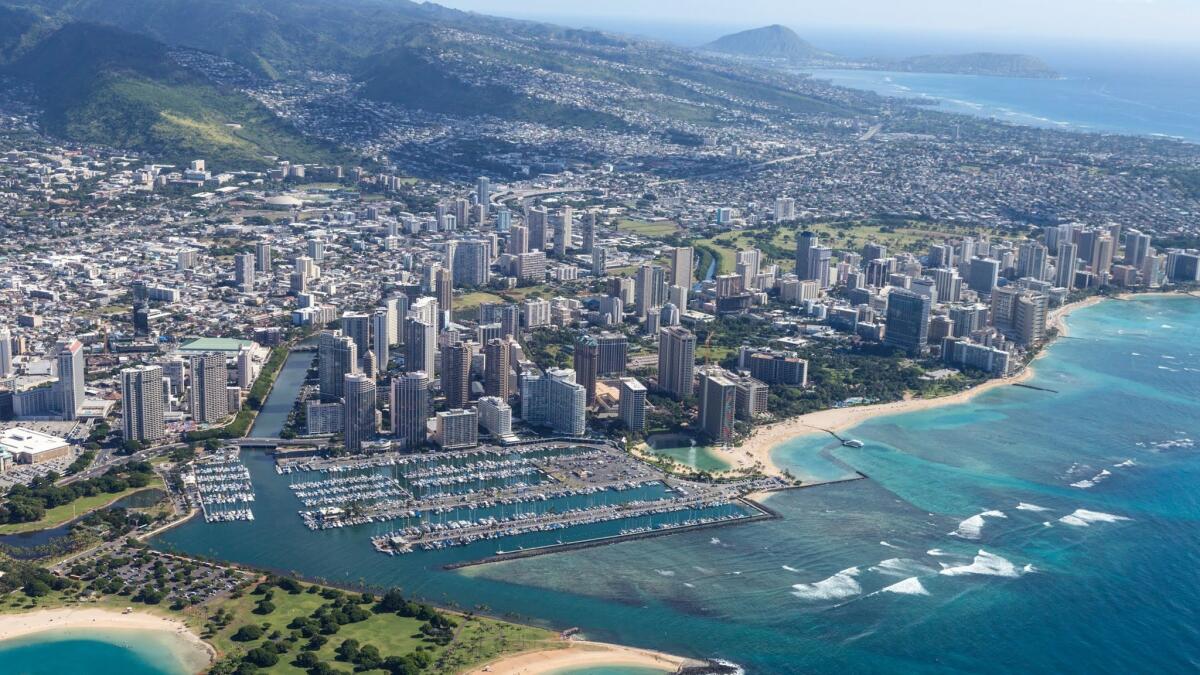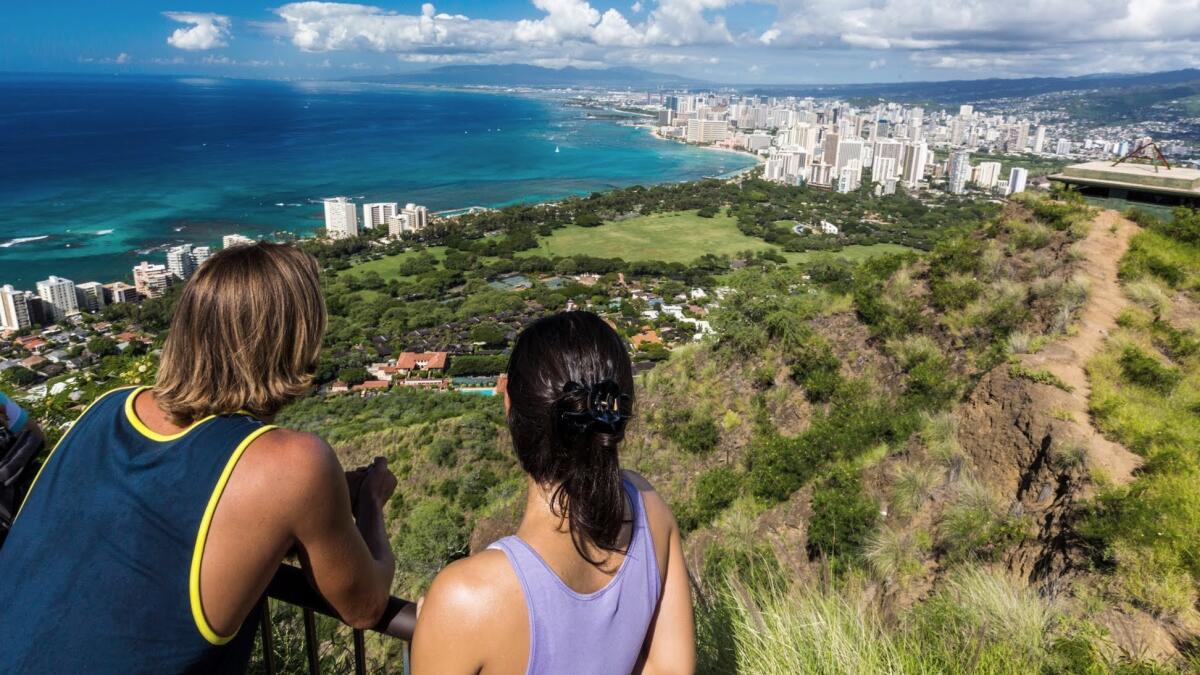Hawaii tells travelers not to be alarmed by planned air-raid drills

- Share via
If you’re in Hawaii on the first Friday of the month and you hear air raid sirens, relax. It is only a test.
For the first time since the 1990s, the sirens will sound Friday throughout the state to help remind visitors of what to do in case of an attack.
The drill was ordered by the Hawaii Emergency Management Agency in response to heightened tensions between North Korea and the United States. On Thursday, North Korea successfully launched its latest missile capable of carrying a nuclear payload across the Pacific.
In a public service announcement, Vern Miyagi, the agency’s administrator, said: “The attack warning signal advises everyone to take immediate shelter. Get inside, stay inside and stay tuned.”
But tourism officials say there’s no reason for travelers to be alarmed.
“Nobody in Hawaii is losing sleep over this. We feel that it’s highly, highly unlikely that something like that would happen,” said George Szigeti, president and chief executive of Hawaii Tourism Authority.

The sirens will sound at 11:45 a.m. Hawaii time on Friday, right after tests of the tsunami warning system.
Friday’s test of the air raid sirens will be the first since the waning days of the Cold War.
For those interested in knowing more, check out Nukemap’s website, which can project the impact of a nuclear attack on a specific location.
North Korea’s ongoing saber-rattling doesn’t appear to be affecting tourism. Tourism data released Thursday showed arrivals up 2.8% and visitor spending up 4.4% during October, compared to the same month in 2016.
“Not a single person has made that call to us on the North Korea situation yet,” Szigeti said.
Pearl Harbor, the U.S. naval base on Oahu, was attacked Dec. 7, 1941. The surprise bombing was carried out by Japan, which had previously invaded China and French Indochina. About 200 Japanese attack planes struck Navy vessels as well as U.S. planes at nearby airfields.
More than 2,300 people were killed.
The next day, the U.S. declared war on Japan, the starting point for U.S participation in a world-wide conflict that would leave 40 million people dead before it ended in 1945.
ALSO
World’s 50 Best Beaches include two in Hawaii
Las Vegas cocktails inspired by Prince Harry and Meghan Markle’s engagement
LAX is removing half the spaces in its cheapest parking lot. No word on when they’ll return
More to Read
Sign up for The Wild
We’ll help you find the best places to hike, bike and run, as well as the perfect silent spots for meditation and yoga.
You may occasionally receive promotional content from the Los Angeles Times.






